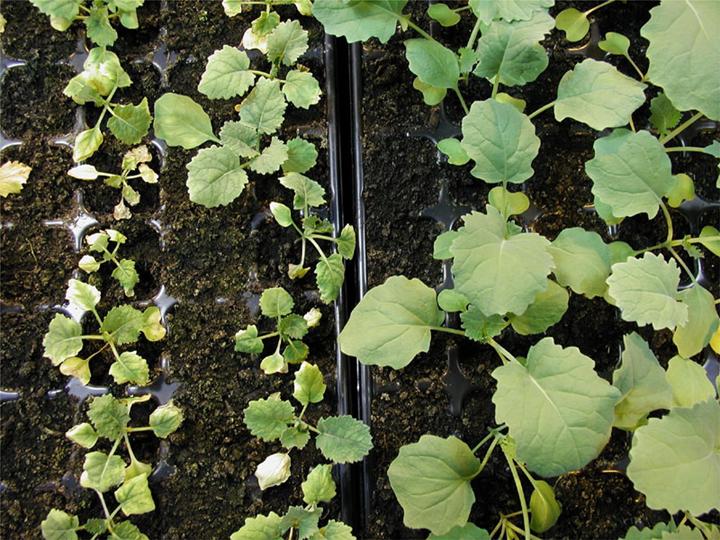Symptoms
Initial symptoms of the wilt are yellowing (chlorosis) of lateral branches and leaves. Verticillium longisporum colonises the upper stem and leaves, while V. dahliae colonises the roots and lower stem. Both fungi have similar symptoms.
Chlorosis and stunting of the entire plant develops later. A dark brown circle in the vascular system is visible when the stem is cut, but is hard to detect in oilseed crops and can sometimes be confused with blackleg. Stems finally develop a bronze colour that coincides with the fungal development of
microsclerotia. Premature senescence and ripening occur, and reduced yields of 50 per cent have been reported.
Wilting causes the fungus to form microsclerotia in the senescing and necrotic plant tissue, which are incorporated into the soil with host death to renew the cycle.
Organism
Verticillium longisporum
Host range
Canola and charlock (wild mustard) can be infected with V. longisporum. Oats and wheat can be infected but do not show symptoms.
Method of spread
V. longisporum microsclerotia are abundant in soil and infected plant tissue where the disease occurs, so the movement of soil and infected plants can spread the disease.
Microsclerotia can remain viable in soils for many years. Spread via microsclerotia contaminants in seed is also possible.
Conditions favouring disease
Infection is likely under moist conditions with an air temperature of about 23°C and cooler soil temperatures of 15 to 19°C.
Confused with?
Other wilt inducing microbes, for example blackleg, and expert diagnosis is often required.
Can be confused with symptoms of V. dahliae which is present in Australia but only colonises the basal region of plants.
Where?
Canada, Europe, Japan, Russia and USA.

Image 4. Canola verticilium wilt on infected plants on left.
Source: A McTaggart (2007)


